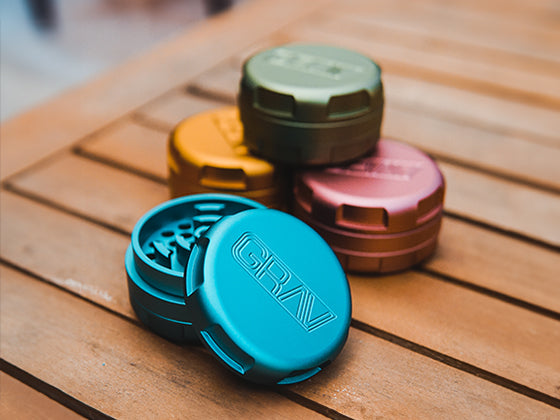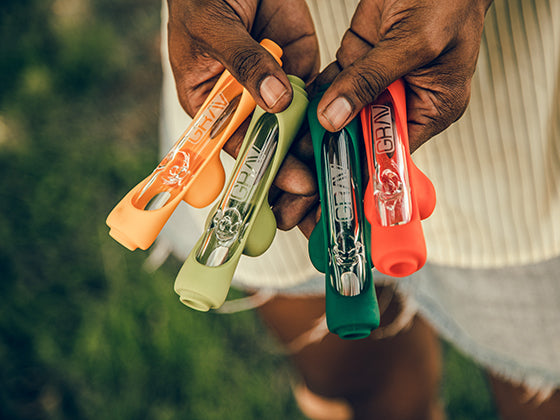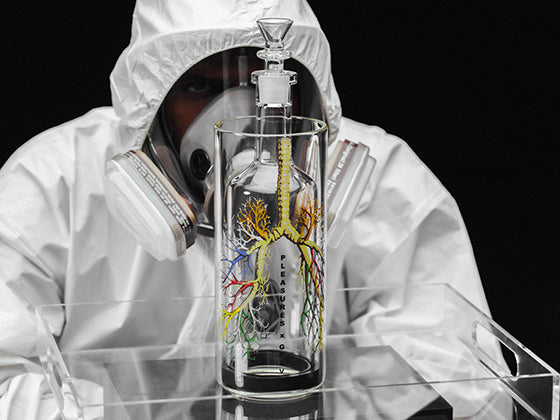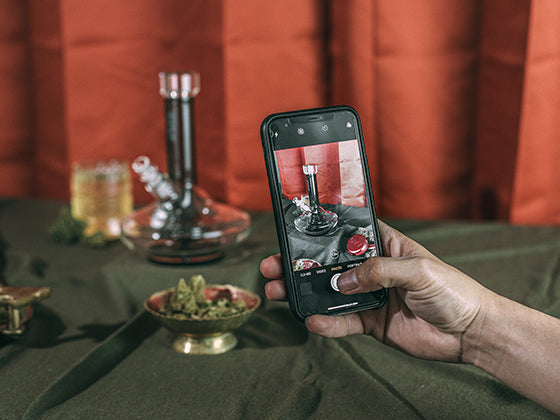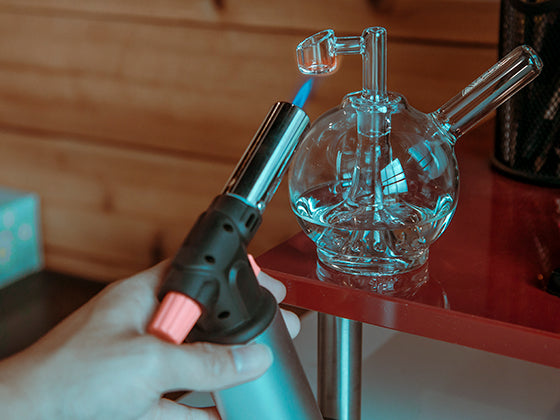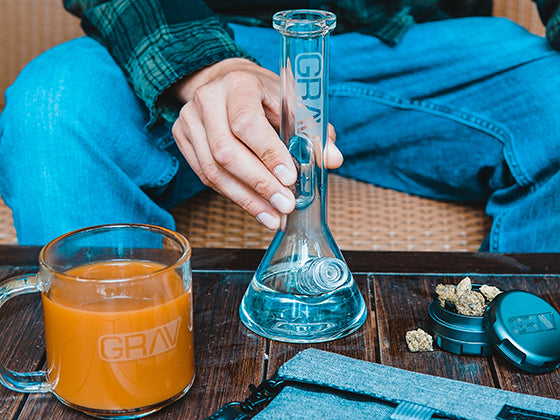So much grief over one little leaf
It’s no secret that cannabis’ history in the United States is one of racist propaganda based in fear rather than fact. But many of those outdated and bigoted beliefs are still reflected in cannabis policies and attitudes towards the plant today. By taking a closer look at how American perceptions of cannabis came to be, we can see that many of the new cannabis battles we’re fighting are actually very old ones in disguise.

In early US history, the cannabis plant wasn’t stigmatized at all. Way back in the 1600s farmers in American colonies were encouraged to grow hemp for use in clothes, ropes, and sails. However, the practice of smoking strains of cannabis with high THC in order to get high wasn’t common in US society until the early 1900s. Between 1910 and 1920, hundreds of thousands of Mexican citizens immigrated into the US to escape the Mexican Revolution, and they brought the practice of recreational smoking with them. This trend coupled with the association of cannabis with jazz music led to a social perception of cannabis as a dangerous substance that was mostly used by hispanic and black people. This was a stereotype the US government was all too happy to promote and exploit, especially as the Great Depression had many white Americans searching for groups to use as scapegoats. Reactionary cannabis laws began to pop up at a state level, and by 1931 the plant was outlawed in 29 states.
One of the biggest perpetrators of outrageous cannabis claims was Harry Anslinger, the first director of the Federal Bureau of Narcotics. He made a number of repugnant, racist claims about the plant, including the assertion that “most [cannabis users] are Negroes, Hispanics, Filipinos and entertainers. Their Satanic music, jazz and swing result from marijuana use. This marijuana causes white women to seek sexual relations with Negroes, entertainers and any others.” He was a big proponent of Reefer Madness era propaganda that stoked white parents’ fears that their nice, respectable children would be corrupted by this foreign drug and driven to acts of insanity and violence. Even the choice to refer to the plant as “Marijuana” rather than the scientific term “cannabis,” which was already familiar to many Americans as a common ingredient in medicines, was a calculated and racist choice. Anslinger and his peers wanted the plant to sound foreign and emphasize its connection with immigrants from Mexico.
Of course, the reason they had to resort to such tactics to promote their agenda was that the facts weren’t on their side. As early as 1937 the American Medical Association advised against the implementation of the “Marihuana Tax Act,” arguing that cannabis should undergo further studies of its medicinal benefits rather than being outlawed over unproven claims. This advice was ignored, and the Marihuana Tax Act was implemented anyway. This would soon become a common theme in American cannabis legislation. In 1944 a report on “The Marihuana Problem in the City of New York” made conclusions including, “the use of marihuana does not lead to morphine or heroin or cocaine addiction”, “marihuana is not the determining factor in the commission of major crimes”, and “the publicity concerning the catastrophic effects of marihuana smoking in New York City is unfounded.” Despite these findings, sentencing for cannabis-related crimes would only get harsher as time went on.

In the early 1970s President Nixon appointed a “National Commission on Marijuana and Drug Abuse”, but when they recommended the decriminalization of cannabis, he ignored their findings completely. In 1988 the DEA requested that administrative law judge Francis Young comment on rescheduling cannabis. He suggested that it be rescheduled from Schedule I to Schedule II, which would have made it possible for doctors to prescribe cannabis as a legal medicine for some conditions. In 1989 the DEA overruled this decision, and kept cannabis in Schedule I, sharing a classification with heroine and quaaludes. Just as in the 1930s, those in charge didn’t care to listen to the facts about cannabis, because their policies weren’t really about cannabis at all. The racist and intentionally inflammatory nature of the “war on drugs,” which was started by President Nixon and then perpetuated by presidents Reagan, Bush Sr, and Clinton, is no longer even up for debate. In 1994 Nixon’s former domestic advisor John Ehrlichman said, “We knew we couldn’t make it illegal to be either against the war or black, but by getting the public to associate the hippies with marijuana and blacks with heroin, and then criminalizing both heavily, we could disrupt those communities.” He continued, “Did we know we were lying about the drugs? Of course we did.”

Fast forward to 2019, and unfortunately not much has changed. People of color are still suffering most from the fallout of the war on drugs as well as present day over-policing and racial profiling. Although great strides have been made in cannabis legalization, the communities that are most owed reparations are often the ones that are left behind. There are signs of hope, like black-owned cannabusinesses and social equity programs that, while imperfect, are steps in the right direction. But it is still a long uphill battle, and it will be some time before those old wounds are truly healed. Undoing the laws that blossomed from racist ideology does not undo the prejudice itself, or the lasting consequences those laws left behind. And even today, when government bodies take hard-line stances against cannabis, they very rarely concern themselves with facts.
And the truth is, we don’t have nearly enough facts to go on due to the sad state of cannabis research in the United States. Because cannabis is still federally illegal and classified as a Schedule I substance, its research is highly regulated and potential researchers have to wade through miles of applications and red tape to even begin a study. Because of this, methods for producing convincing cannabis placebos or regulating dosage via smoking haven’t been perfected, which makes the studies that do exist easy to discredit by people who are determined to do so. These restrictions, coupled with the fact that the only federally authorized cannabis cultivation site produces cannabis that has such low concentrations of THC it’s genetically closer to hemp than commercial cannabis, creates a vicious cycle. It’s all too easy for politicians to ignore the facts about cannabis because it’s so hard to verify anything with government-sanctioned studies.

And as Memorial Day approaches, it’s important to remember that these age-old methods of fear-mongering and discrediting the potential benefits of cannabis are being used to harm a group of citizens that this country pays a lot of lip service to protecting. Many veterans could benefit immensely from cannabis, but they’re barred from doing so at every turn. Between 11-30% of US veterans experience PTSD depending on where they served, and PTSD is considered a qualifying condition for medical cannabis in 30 out of 33 states with medical cannabis laws. Mountains of anecdotal evidence suggest that cannabis has been of huge help in managing PTSD symptoms for many veterans, and some scientists think it has the potential to actually cure PTSD, which currently has no proven cure. But because cannabis is federally illegal VA physicians aren’t allowed to prescribe it, and VA health insurance doesn’t cover cannabis even in legal states. In April of this year, the VA opposed three bills relating to veterans and medical cannabis, including one that called for the VA to carry out a clinical trial of the effects of cannabis on PTSD symptoms. The reason for shooting this bill down? The trial it called for was too large, and according to a VA representative cannabis studies should “include the smallest number of participants to avoid putting the subjects at increased risk unnecessarily.” Apparently sending citizens to war and then denying them medicine that could literally save their lives by preventing symptoms that often lead to suicide is an acceptable level of risk, but letting someone hit a joint in a clinical trial is just too dangerous.
But as we’ve learned from US history, cannabis legislation is never really about what lawmakers claim it’s about. This became all too clear in the recent case of Tye Reedy, who was stripped of his army pension because he works at the cannabis company Acreage Holdings, which is based in Canada and has completely legal operations. The Judge Advocate General’s office at West Point wrote a letter to Reedy explaining that, “A military officer working in the cannabis industry runs contrary to Army values.” Which begs the question, what are Army values? Certainly the army wasn’t protecting Reedy from any physical danger by punishing him for working at a successful business. So were they defending the patently American values of demonizing cannabis and its users to fit some imaginary standard of respectability? Maybe one day the US government will prioritize the welfare of all of its citizens over playing politics and giving in to unfounded scare tactics, but at this point the research is inconclusive.


